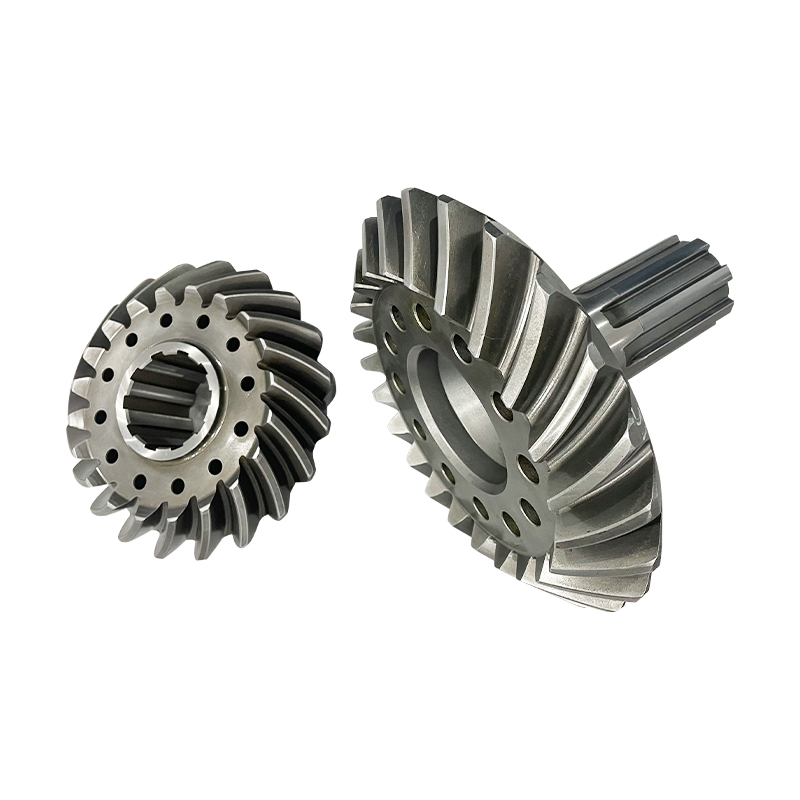In the realm of mechanical power transmission, bevel gear represent a cornerstone of angular drive applications. These uniquely shaped gears, characterized by their conical form, are essential in any mechanism where the direction of a shaft's rotation must be changed. Yet beyond their physical attributes lies a world of intricacies that underscore their critical role in engineering systems.
The Anatomy of a Bevel Gear
At its essence, a bevel gear features teeth cut on a conical surface. Unlike cylindrical gears, which transfer motion along parallel axes, bevel gears are designed for intersecting shafts—typically at a 90-degree angle. However, the flexibility of their geometry allows for custom configurations, accommodating virtually any angular disposition.
There are several types of bevel gears, each serving specific purposes. Straight bevel gears exhibit straight teeth that taper toward the apex of the cone, offering simplicity and cost-efficiency. However, they can be noisy under load. Spiral bevel gears, by contrast, feature curved teeth, enhancing smoothness and load capacity. For the most demanding applications, hypoid gears—a variant of spiral bevels with offset axes—provide superior torque transmission with reduced vibration.
Why Bevel Gears Matter
The unique capability of bevel gears to alter the axis of rotation is indispensable across a multitude of industries. They are found in everything from automotive differentials to industrial machinery, marine drives, and even aerospace applications. Wherever power needs to be redirected with precision and efficiency, bevel gears are often the hidden champions.
Their design facilitates a compact and efficient transfer of power. Compared to other gear types, bevel gears can transmit large amounts of torque in confined spaces, making them ideal for high-performance, space-sensitive installations. Additionally, their high mechanical efficiency minimizes energy losses, translating into operational cost savings over time.

Design Considerations
Engineering a bevel gear set demands a nuanced approach. Material selection is paramount—commonly, alloy steels are favored for their durability and load-bearing capabilities. For high-wear scenarios, case hardening is often employed to extend gear lifespan.
Tooth geometry, surface finish, and alignment are equally critical. Misalignment can lead to premature failure or inefficiencies, necessitating precise manufacturing and assembly practices. In high-speed applications, noise and heat generation become central concerns, requiring advanced design strategies and lubrication systems.
Moreover, tolerance to axial and radial loads must be accounted for in both the design and mounting. Engineers frequently utilize computer-aided simulations to model stress distributions and predict gear behavior under real-world operating conditions.
Emerging Innovations
While the fundamental principles of bevel gear mechanics have remained consistent, modern manufacturing techniques have significantly enhanced their potential. CNC machining and additive manufacturing have enabled unparalleled precision, allowing for intricate geometries and tighter tolerances than ever before.
Coating technologies, such as PVD (physical vapor deposition), are extending gear life by reducing wear and corrosion. Meanwhile, advancements in synthetic lubricants are improving efficiency and reducing maintenance intervals, especially in sealed gearboxes.
Furthermore, the integration of smart sensors within gear systems is gaining traction. These sensors monitor variables such as temperature, vibration, and load in real time, offering predictive maintenance capabilities that minimize downtime and avert costly breakdowns.
Bevel gears, though often obscured within complex machinery, are anything but ordinary. Their design reflects a harmony of form and function, delivering directional control and mechanical power with remarkable finesse. As industries demand greater efficiency and reliability, bevel gears continue to evolve—quietly, precisely, and indispensably. Whether in the undercarriage of a vehicle or the turbines of a wind farm, their contribution is profound, their engineering sublime.
We have a strong R&D team, and we can develop and produce products according to the drawings or...
We have two of our own casting foundries and one CNC machining factory. So we can offer the best price...
We have our own testing lab and the advanced and complete inspection equipment, which can...